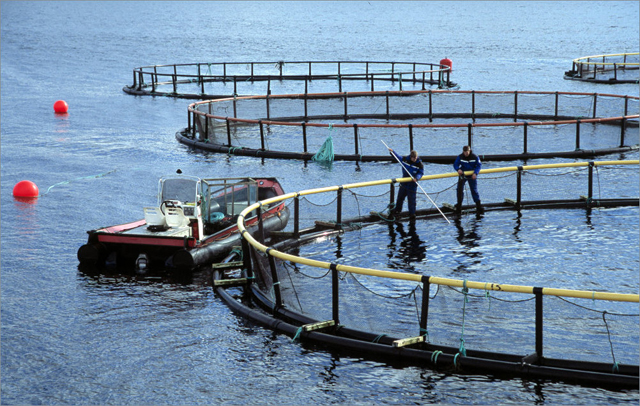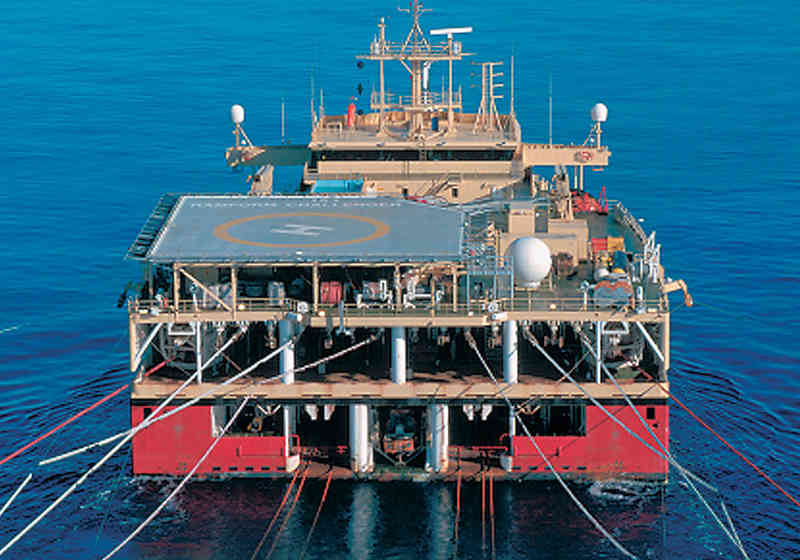For the fishing industry, it is important to continue to harvest the resources on the fishing grounds. Spawning places must also be preserved in order to maintain fish stocks. Other industries that use the sea have other needs. When they want to use the same areas as fisheries do, conflicts may arise.
Petroleum Activities
It is primarily the seismic activities of the petroleum industry that conflict with fisheries. This is because the collection of seismic data takes place over large areas. This applies to all Norwegian waters where both fishing and petroleum activities occur.
Seizure of areas before, during and after the extraction of petroleum resources is another area of conflict. A potential conflict of interest depends on whether the new petroleum installations, such as platforms and pipelines, are located in important fishing areas.
The Directorate of Fisheries is a consultative body for all petroleum developments. More coordination and cooperation can curb conflicts concerning the use of areas between fisheries and petroleum interests. The Directorate of Fisheries is of the opinion that regulations and the permit and notification systems for seismic activity should be improved. Moreover, the working conditions of fisheries experts on seismic vessels should be improved.
Offshore wind
Offshore wind power may have greater potential for conflict with fisheries interests than the location of petroleum installations. Any development of offshore wind could lock up large areas. This is because plants will consist of many windmills, the distance between each windmill will be great, and safety zones are required around each windmill.
Any conflicts will depend on the scale of developments, and where windmills are located. Conflicts may primarily arise if these are located at important fishing and spawning grounds. There is uncertainty concerning whether it will be possible to fish inside the offshore wind plants, and whether such developments will affect fish behaviour, spawning and migration patterns.
In order to reduce level of conflict as much as possible, good cooperation between fisheries and offshore wind interests is essential ahead of any developments.
Mining and disposal at sea
The Directorate of Fisheries is initially opposed to any disposal of mining waste in fjords because it may harm the environment. All bottom life is eradicated in such cases. Moreover, fine particles are dispersed in the water with a negative impact on fish and zooplankton. Toxic chemicals and heavy metals from discharges may also have serious environmental consequences.
In the management of large discharges, considerations must be made towards the marine environment, the spawning and nursery areas, fishing areas, fish farms nearby, as well as food security and seafood industry. The Ministry of Fisheries and Coastal Affairs has stated that the disposal of mining waste mixed with chemicals may harm the reputation of Norwegian seafood. The Directorate of Fisheries primarily wants such disposal to be on land.
Shipping
Ships approaching too close to fishing grounds in use can result in collisions between ships and fishing vessels. Ship traffic can also damage or destroy fishing equipment.
Shipping traffic is regulated by international maritime rules, so any conflicts mainly concern individual vessels that break the rules. A new traffic separation scheme has improved coordination between maritime transport and fisheries.
Aquaculture
There are few conflicts between aquaculture and fisheries. That's because many plants are located in areas where there is less active fishing than in the ocean, for example the fjords. Relocation and growth in aquaculture may give rise to future conflicts. These will concern both the locations of the facilities and mooring.
There have been some problems in that wild fish, such as saithe, deteriorate in quality if they eat the feed. Nor is it desirable with medication use that may be harmful to wild fish and shellfish.
Marine Protected Areas
There are few conflicts between protected areas and fisheries, as long as the best fishing grounds are not converted to protected areas. On the contrary, marine protected areas are good for biodiversity and the restoration of depleted stocks. Protected areas probably result in more fish and shellfish in the surrounding areas as they migrate when the population grows inside the protected area.
Norway has protected large parts of the ocean floor against the use of bottom gear. A total of 800,000 km2, or 38 per cent of Norwegian waters, are protected against the use of bottom gear.
Recreational Use
The conflicts between commercial fishing and recreational fishing are few and local. Recreational fishing for own use is virtually conflict-free along most of the coast. Recreational fishing for sale may conflict with local commercial fishing if the local fish stocks are small. There may also be conflicts with tourist fishing, but since this industry is dependent on fish being available, most tourist facilities are good at instructing their guests.

